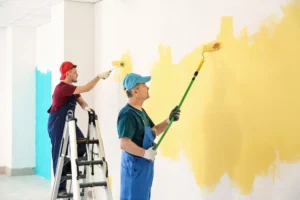Interior Painters Adelaide requires patience and commitment; yet it can be an expressive form of self-expression through shapes and colors on canvas.
There are various kinds of painters, each using their own methods to produce breathtaking pieces. This article will outline some of the more prevalent kinds of painters and their techniques.
Aesthetics
Aesthetics is the philosophical study of art and beauty. This area was of particular interest for 18th and 19th-century philosophers such as Kant and Hegel; today aesthetics remains an ongoing component of philosophy of art; its focus being the concepts required in understanding works of art as well as experiencing them for themselves; traditionally beauty was considered its focus; while more recently aesthetic concepts like expression or the sublime have also come under scrutiny.
Painters Adelaide are individuals who produce art using paint. This may take place on canvasses, paper or other surfaces and involves splashing colours around in order to form desired images – whether realistic or abstract. Realist artists try to accurately represent subjects by depicting shape, colour and texture while abstract painters aim to express emotions visually – this process is known as expressive painting.
Dexterity
Painting requires dexterity – house painter Adelaide using your hands in precise movements that create precision with each brushstroke – as this allows you to add small details without tiring, while painting for long hours without becoming tired. Painting also involves knowledge of painting supplies and materials like paints, trays, brushes and straight edges among others; prior planning of work helps minimize errors and complete projects efficiently and on schedule.

Painters throughout history have utilized various styles and techniques to express their imaginations, often drawing inspiration from historical events, cultural beliefs and personal ideals. Vedutas were commonly painted during Grand Tour tours for European aristocrats; Expressionism used vibrant colors with characters showing exaggerated emotions to depict characters such as Der Blaue Reiter, Franz Marc or Edvard Munch; abstract paintings allowed artists to experiment freely using an endless variety of mediums.
Painting Techniques
There are various painting styles and techniques, some associated with specific art movements while others stemming from styles which came before. Furthermore, some even engage viewers’ vision directly.
One such technique is Sfumato, a technique for creating indistinguishable tones and shades with oil paints that dry slowly. Sfumato requires skilled blending, while oil paints tend to dry more slowly for this style of painting. Chiaroscuro uses contrast between light and shadows to create depth; Tenebrism takes this concept one step further by using all-black effects instead of shadows to achieve dramatic effects.
Encaustic painting is another popular painting technique, using hot colored wax to create artwork. This style can be done on various surfaces including wood panels. Before canvasses became popular, panel paintings were frequently done using flat wooden boards like oak, linden, pine needles pine needles beech cedar to produce this style known as grisaille painting which typically depicts shades of gray hues.
Painting Materials
Painting can be performed on any surface and digitally (on computer). Painters utilize different kinds of paint depending on their preference and creativity – such as acrylics, watercolors, oils or even spray paints (street art).
Matte paintings are widely utilized in film industries to create stunning landscape backgrounds that blend in seamlessly with actual footage, creating realistic scenes. This method of production is particularly helpful when creating environments like fairytales and sci-fi that would be prohibitively costly to build on a large-scale set.
Oil paints have been around since antiquity and consist of pigments suspended in either linseed or walnut oil, providing slow-drying coverage with vibrant hues that blend more seamlessly than their watercolor counterparts. Watercolors remain an established choice for painting on paper but also offer superior blending ability with vivid hues on various other surfaces such as papyrus bark papers plastics vellum leather fabric etc.